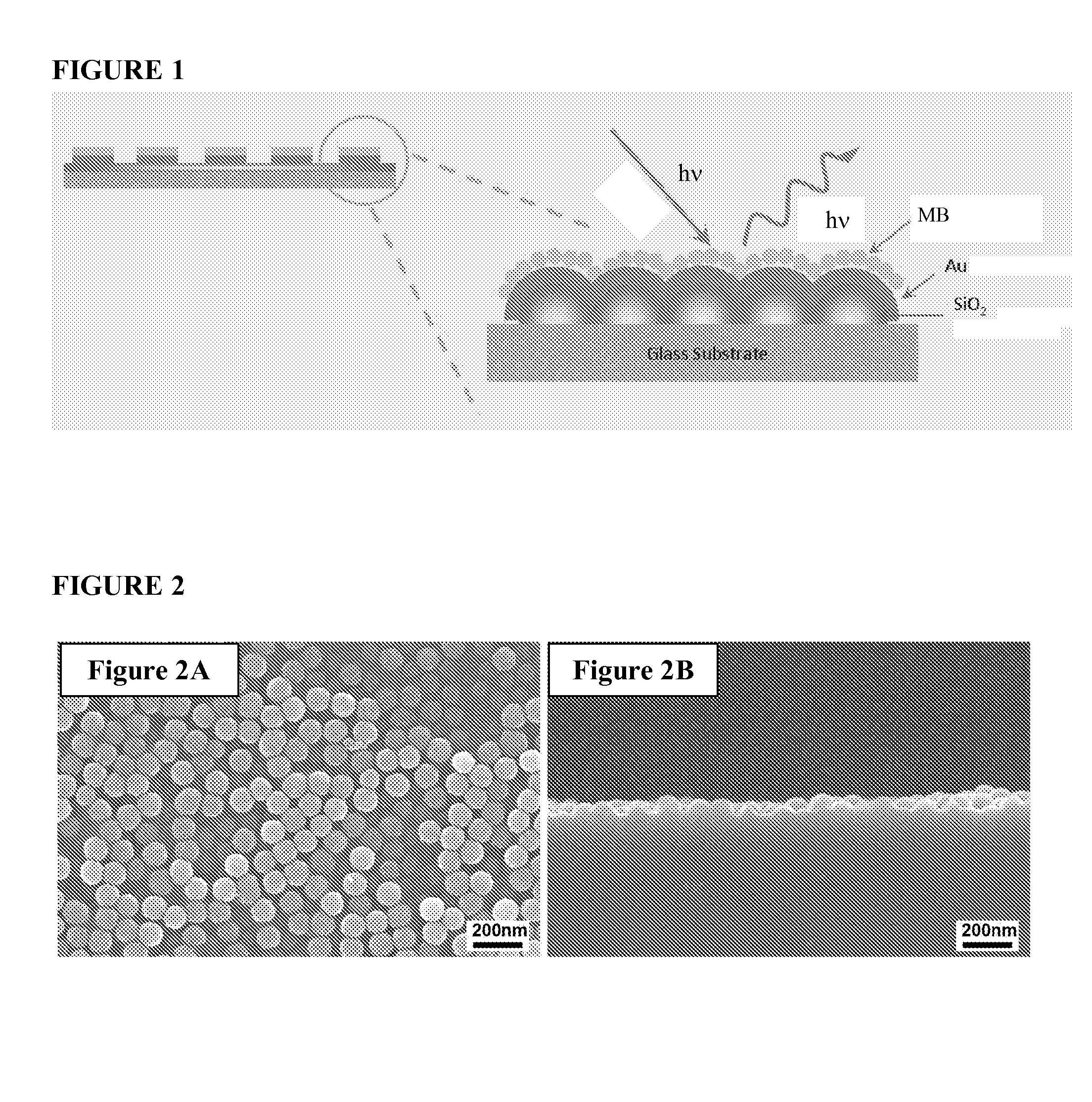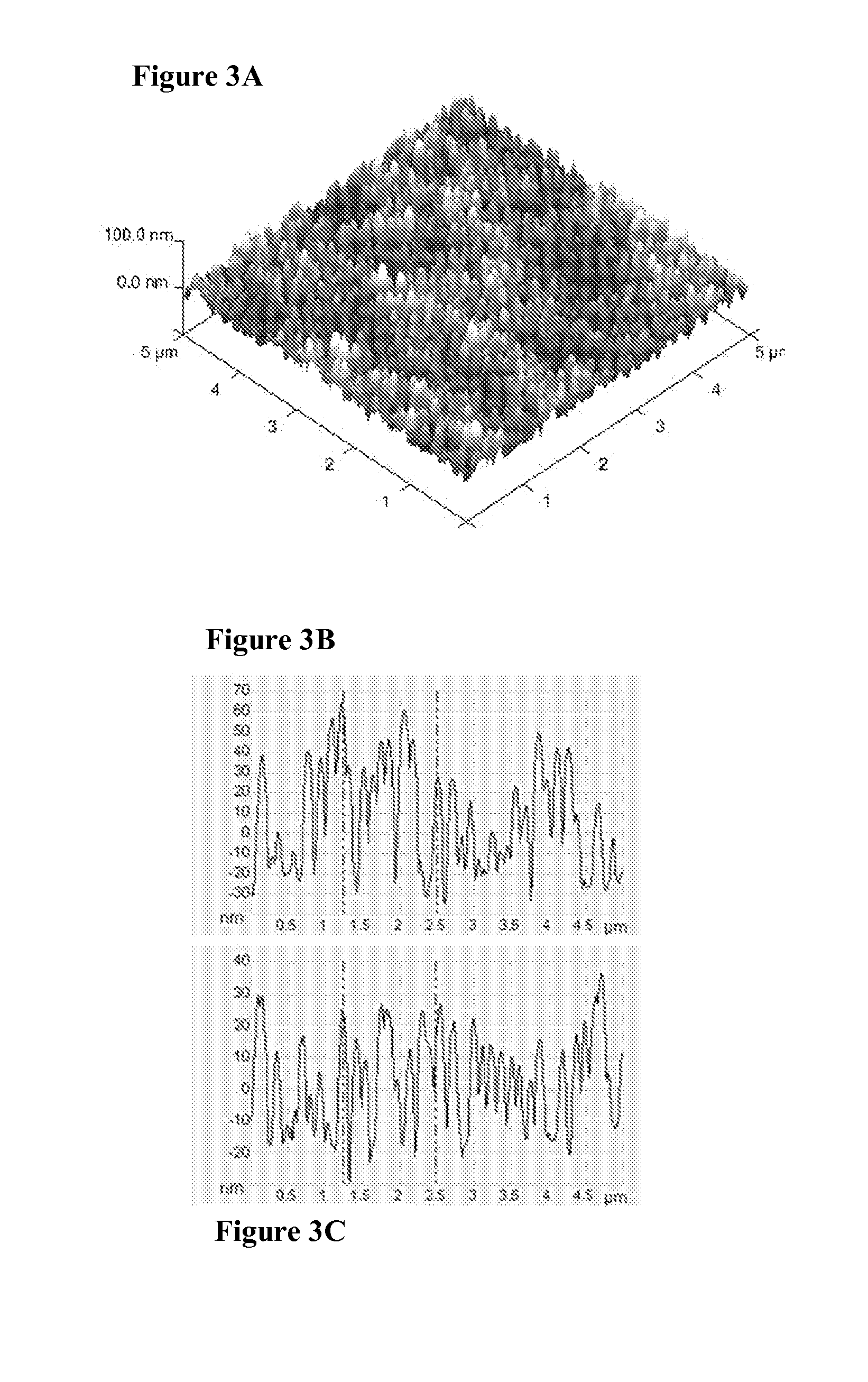Nanosilica sintered glass substrate for spectroscopy
- Summary
- Abstract
- Description
- Claims
- Application Information
AI Technical Summary
Benefits of technology
Problems solved by technology
Method used
Image
Examples
examples
[0085]The samples were fabricated using a process comprising dip-coating a near monolayer of silica glass spheres with a diameter of 100 nm followed by heating the substrate in a furnace to attach the particles. For smaller particles, it was found that temperatures well below the softening point of the substrate are sufficient for attaching particles. For the samples described here, 100 nm silica particles from Nissan Chemical (Houston, Tex.) were used. They were dispersed at a concentration of 5% in isopropyl alcohol. The solution was used for dip-coating a soda lime glass substrate with a substrate removal speed of 25 mm / min. The sample was then heated in a furnace to a temperature of 640-650° C. for one hour and then cooled. This temperature is ˜75° C. below the softening point of soda lime glass. The immobilizing layer was a siloxane-based materials in combination with alkali metal silicate materials. Both require a second dip coating for application and low thermal treatment fo...
PUM
| Property | Measurement | Unit |
|---|---|---|
| Thickness | aaaaa | aaaaa |
| Thickness | aaaaa | aaaaa |
| Radius | aaaaa | aaaaa |
Abstract
Description
Claims
Application Information
 Login to View More
Login to View More - R&D
- Intellectual Property
- Life Sciences
- Materials
- Tech Scout
- Unparalleled Data Quality
- Higher Quality Content
- 60% Fewer Hallucinations
Browse by: Latest US Patents, China's latest patents, Technical Efficacy Thesaurus, Application Domain, Technology Topic, Popular Technical Reports.
© 2025 PatSnap. All rights reserved.Legal|Privacy policy|Modern Slavery Act Transparency Statement|Sitemap|About US| Contact US: help@patsnap.com



